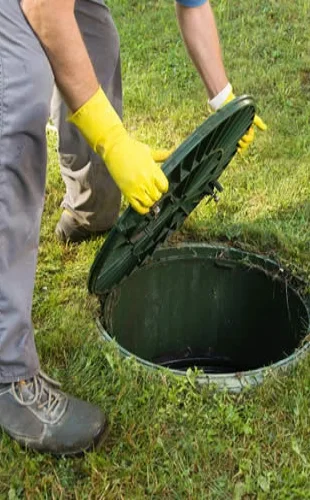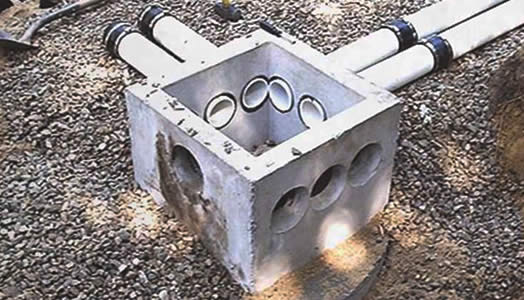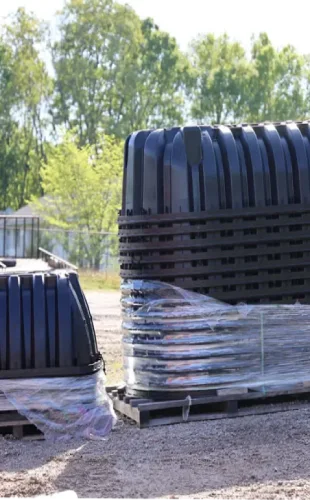Stay Safe
Before diving into grease trap cleaning, prioritize safety. Grease traps contain potentially harmful substances, including rancid fats, oils, and food particles. Here are some important safety measures:
- Protective Gear: Always wear gloves, goggles, and a mask for protection from harmful bacteria and noxious fumes.
- Ventilation: Make sure the area is well-ventilated to avoid inhaling any unpleasant or harmful odors.
- Proper Disposal: Know your local regulations for disposing of grease and sludge. Improper disposal could lead to hefty fines and environmental damage.
Gather Your Tools
Having the right tools on hand will make the job more manageable. Here’s what you’ll need:
- Protective Gear: As mentioned, gloves, goggles, and masks.
- Scoop and Bucket: For removing grease and solid waste.
- Scraper: To dislodge stuck-on grease.
- Wire Brush: For scrubbing the interior surfaces.
- Cleaning Solutions: Non-toxic degreasers and antibacterial cleaners.
- Measuring Stick: To check grease levels.
- Water Hose: For rinsing the trap.
Getting Ready
Preparation is key to an efficient cleaning process. Follow these steps to get started:
- Clear the Surroundings: Move any items or equipment away from the grease trap to prevent contamination.
- Lay Down Protective Sheets: Use plastic or old sheets around the trap to catch any spills or debris.
- Turn Off Water Flow: Ensure no water is running into the trap during cleaning to avoid overflow or mess.
Removing the Grease
Now, it’s time to tackle the main task, which is getting rid of the accumulated grease and debris.
- Open the Trap: Carefully remove the lid of the grease trap. Be prepared for strong odors.
- Measure the Grease Layer: Use your measuring stick to gauge the thickness of the grease layer. Record this for maintenance records.
- Scoop Out Grease: Use your scoop and bucket to remove the top layer of grease and solid waste. Dispose of this according to local regulations.
Cleaning the Interior
After removing the bulk of the grease, focus on the interior surfaces. Use your scraper to dislodge any remaining grease stuck to the walls and baffles of the trap. Ensure all corners and hard-to-reach areas are thoroughly scraped. Use a non-toxic degreaser to coat the interior surfaces. Use a wire brush to scrub along the walls, baffles, and other parts of the trap. This helps remove any stubborn grease and grime. Afterward, rinse the trap thoroughly with a water hose, ensuring all cleaning solution and loosened debris are washed away.
Inspect and Reassemble the Trap
Once the trap is clean, inspect it before putting it back together. Look for any signs of wear or damage to the trap. Replace any worn parts if necessary. Put the baffles and lid back in place securely. After reassembling, it’s important to test and ensure everything is functioning correctly. Turn the water flow back on and run it through the trap to check for leaks or blockages. Observe the trap for a few minutes to ensure it’s operating correctly and efficiently.
Keep It Clean
Routine maintenance is essential to keep your grease trap in top condition. Depending on the size of your kitchen and the volume of grease produced, establish a regular cleaning schedule. Monthly or quarterly cleanings are typical for most establishments. Maintain a log of cleaning dates, grease levels, and any issues encountered. This helps track the trap's performance and schedule future cleanings.
Are You Looking for a Local Grease Trap Manufacturer?
By following these steps, you can ensure your grease trap remains efficient, and minimize the risk of blockages and bad odors. At Garrett Precast, we’re here to support you. When it comes to installing or replacing a grease trap, it's important to purchase from a reputable grease trap supplier. High-quality products from trusted grease trap manufacturer will ensure durability, efficiency, and peace of mind. Contact us today and speak with our specialists.














.webp)

